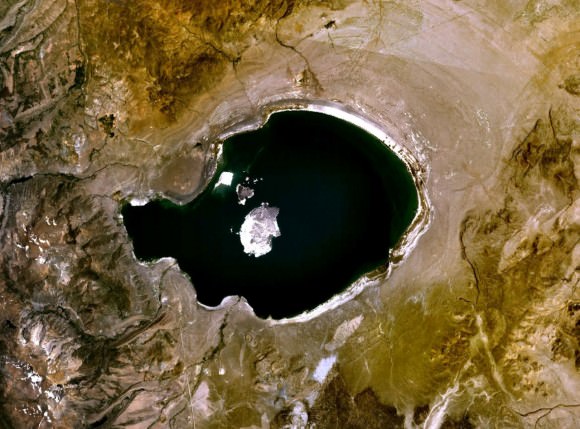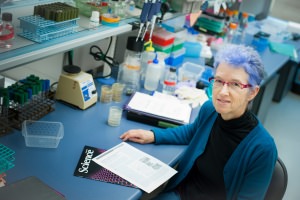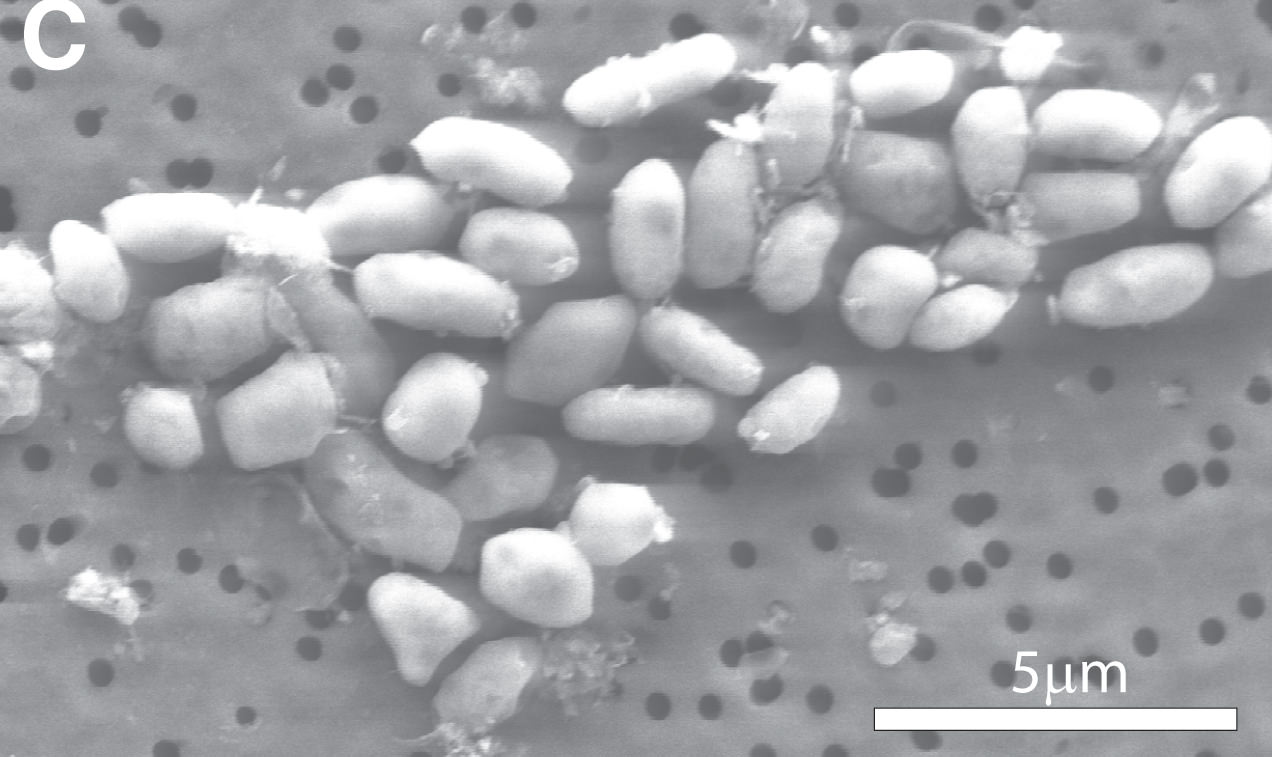[/caption]
In late 2010, NASA set the Internet buzzing when it called a press conference to discuss an astrobiological finding that would impact the search for extraterrestrial life. Many speculated that some primitive life had been found on Mars or one of Saturn’s moons. But the evidence was found on Earth; a strain of bacteria in California’s Lake Mono that had arsenic in its genetic structure. The discovery implied that life could thrive without the elements NASA typically looks for, mainly carbon and phosphorous. But now, a new study challenges the existence of arsenic-based life forms.
The 2010 paper announcing arsenic based life, “Arsenic-eating microbe may redefine chemistry of life,” was written by a team of scientists led by Felisa Wolfe-Simon. The paper appeared in Science and refuted the long-held assumption that all living things need phosphorus to function, as well as other elements including carbon, hydrogen, and oxygen.

The phosphate ion plays several essential roles in cells: it maintains the structure of DNA and RNA, it combines with lipids to make cell membranes, and it transports energy within the cell through the molecule adenosine triphosphate (ATP). Finding a bacteria that uses normally poisonous arsenic in the place of phosphate shook up the guidelines that have structured NASA’s search for life on other worlds.
But microbiologist Rosie Redfield didn’t agree with Wolfe-Simon’s article and published her concerns as technical comments in subsequent issues of Science. Then, she put Wolfe-Simon’s results to the test. She led a team of scientists at the University of British Columbia in Vancouver and tracked her progress online in the name of open science.
Redfield followed Wolfe-Simon’s procedure. She grew GFAJ-1 bacteria, the same strain found in Lake Mono, in a solution of arsenic with a very small amount of phosphorus. She then purified DNA from the cells and sent the material to Princeton University in New Jersey. There, graduate student Marshall Louis Reaves separated the DNA into fractions of varying densities using caesium chloride centrifugation. Caesium chloride, a salt, creates a density gradient when mixed with water and put in a centrifuge. Any DNA in the mixture will settle throughout the gradient depending on its structure. Reaves studied the resulting DNA gradient using a mass spectrometer to identify the different elements at each density. He found no trace of arsenic in the DNA.
Redfield’s results aren’t by themselves conclusive; one experiment isn’t enough to definitively disprove Wolfe-Simon’s arsenic-life paper. Some biochemists are eager to continue the research and want to figure out the lowest possible level of arsenic that Redfield’s method could detect as a way of determining exactly where arsenic from the GFAJ-1 DNA ends up on a caesium chloride gradient.

Wolfe-Simon is also not taking Redfield’s results as conclusive; she is still looking for arsenic in the bacterium. “We are looking for arsenate in the metabolites, as well as the assembled RNA and DNA, and expect others may be doing the same. With all this added effort from the community, we shall certainly know much more by next year.”
Redfield, however, isn’t planning any follow-up experiments to support her initial findings. “What we can say is that there is no arsenic in the DNA at all,” she said. “We’ve done our part. This is a clean demonstration, and I see no point in spending any more time on this.”
It’s unlikely that scientists will conclusively prove or disprove the existence arsenic-based life anytime soon. For the time being, NASA will likely confine its search for extraterrestrial life to phosphorus-dependent forms we know exist.
Source: nature.com


This is definitely a rejection of the Wolfe-Simon et al paper, confirming the early notes that they had used sloppy methods and eager claims instead trying to reject their own hypothesis. It is also confirming the standard knowledge among chemists, arsenate nucleotides hydrolyze immediately.
Notably W-S has moved the goalposts to look for arsenic in crystallized ribosomes to verify her original claims, as noted in this follow up article. This something that is claimed to be difficult even without arsenic and will take many years to sort out.
“In a poster presented at last December’s American Geophysical Union meeting, Wolfe-Simon reported progress on optimizing GFAJ-1’s growth with a combination of carbon sources and amino acids, as well as progress in preparing samples for nucleic acid stability testing, ribosome crystallization, and MS analyses. “We think structure is the way to go,” Wolfe-Simon says. “We want to solve the structure of the ribosome and see what it’s going to tell us,” she adds. “Is the arsenic there? Is it randomly distributed? Is it in specific places?” she says. “We’re going to look at the RNA to see if [arsenic] is in the backbone.
“We’re super excited about our next experiments,” she says. “What’s nice about science is the truth will reveal itself.”
To some researchers, however, an attempt to crystallize GFAJ-1’s ribosome to check whether it contains arsenic is like leaving the low-hanging fruit behind and clambering straight for the treetops. The focus at first should be on more straightforward tests that get at the heart of the is-there-or-isn’t-there-arsenic-in-the-DNA question, Benner says. He’d like to see Wolfe-Simon grow GFAJ-1 in the presence of radioactive arsenate and then perform multiple fractionations—separations of the various cellular components—while tracking the radioactivity to see where the arsenate goes. In the original report, “she did one fractionation. She started down the road a chemist understands,” Benner says. But she didn’t do enough rounds of fractionation to see whether radiolabeled arsenate could end up in specific molecules, such as DNA, he adds.
“Crystals of bacterial ribosomes have the resolution to yield atomic models these days,” says Venkatraman Ramakrishnan of the Medical Research Council Laboratory of Molecular Biology in Cambridge, England, who shared the 2009 Nobel Prize in Chemistry for ribosome crystallization work. But it’s not necessary to crystallize GFAJ-1’s ribosome to put the arsenic-based-life controversy to rest, he says. “Crystallization of ribosomes from a new species is a nontrivial undertaking that can take many years, and possibly never succeed,” he says. He suggests that the team try to isolate ribosomal RNA, or nucleotides from ribosomal RNA, and determine, with radioactivity or other tools, whether arsenic ends up there.” [My bold]
This is a jump beyond the reasonable next step, as she stated above “looking for arsenate in the metabolites”. This is claimed to be exactly what the new work is _not_ going to do.
The strategy of delaying is a well known sign of pathological science.
I don’t take quite this negative view of the matter. However, this appears to be a pretty strong falsification of any claim by the initial results that DNA encorporates arsenic in the backbone of the molecule. It seems reasonable to check out other ways the GFAJ-1 might take up arsenic. One the other hand it appears more likely GFAJ-1 has some gene which produces an arsenic enclathrating or binding molecule which ejects arsenic ions from the cytosol. In that case GFAJ-1 has evolved a strategy to survive the influence of arsenic.
LC
Yes, the cellular swelling by arsenic media (which was one error source for their number counts btw) was due to GFAJ-1 producing vacuoles. One hypotheses was that this is precisely what these cells did.
Not that W_S et al were interested in checking where the arsenic went in the cell. They had already decided what was happening and sought confirmation instead of potential rejection.
Which gets me back to the backtracking now seen. Sure there can be other explanations for looking at the hardest instead of the easiest observations. A search for easy and necessary testing isn’t one of them.
m? ?l?ssm?t?’s st??-?unt m?k?s $74 ?n h?ur ?n th? l??t??. Sh? h?s b??n ?ut ?f w?r? f?r 9 m?nths but l?st m?nth h?r in??m? w?s $8524 ?ust w?r?ing ?n th? l??t?? f?r ? f?w h?urs. R??d m?r? ?n this w?b sit?…
? ? S ? S ? ? R ? . ? ? ?
Hopefully this is the final body-slam needed to debunk the original studies’ overreaching conclusion..
“She led a team of scientists at the University of British Columbia in Vancouver and tracked her progress online in the name of open science.”
The last part of this sentence is the most important part of the article. If only it was standard procedure in all the sciences.
I agree.
And i also want to know how is NASA response according to Redfield findings.
Increase Female Libido
Felisa Wolfe-Simon et al. has caught shown with their hands in the cookie jar. They wanted media attention and kudos far more than they wanted the search for scientific truth using the scientific method. They did claim almost absolute evidence for alien life, where the actual truth was that their own investigative science never in a million years could support that broad brush of a conclusion.
Meanwhile suckers in the media and now many of the general public have taken this now as some literal truth. They honestly believe this is some form of alien life on Earth and that arsenic is another basis or alternative mechanism for life to live and evolve – and what is worse, nobody is around to strongly correct their now wrong misconceptions.
We (yet again) have heard the triumphant and gleeful announcement of some new discovery, only to find that the research was likely done very sloppily and is only dripping with hype rather than truth.
It is no wonder the sciences position as an important discipline in the modern world is so badly tarried with many doubters and deniers these days.
All this complicated story has just covered with smoke and mirrors, whose bottom line is dubious at best and basically dead wrong at worst. Few are the wiser.
Felisa Wolfe-Simon et al. deserve to have their funding immediately pulled as a lesson that doing or claiming their dud science and making dodgy conclusions will not be tolerated. Professional ostracism is the only way to correct such destructive damage to the sciences.
Luckily it doesn’t work that way, because then little speculative science would be done. Yes, in the end there may be ostracism, see my own analysis below.
They wanted positive media attention. One of the ironies is that while they took the luxury of “science by press meeting” before publishing they also asked their critics to publish before “discussing it”. See the double standard already?
And the “we have moved on to the hard stuff, you do the easy stuff” is the continuation of that.
I disagree.
Even the title of their paper announces the ‘discovery’ in the Science article “A Bacterium That Can Grow by Using Arsenic Instead of Phosphorus.” This plainly has not been proven. Then listen to her own words; Felisa Wolfe-Simon tells about her arsenic micro organism research”
Guilty as charged!
Overreact much? We have one positive result, and one null result. We have no evidence of data falsification or academic dishonesty. Specifically, what “destructive damage” are you accusing Simon-Wolfe and her team of committing?
Damaging or degrading the public confidence in science.
Is nobody going to point out the fact that a petri dish with arsenic and phosphorous in it is likely vastly different from the Lake Mono environment?